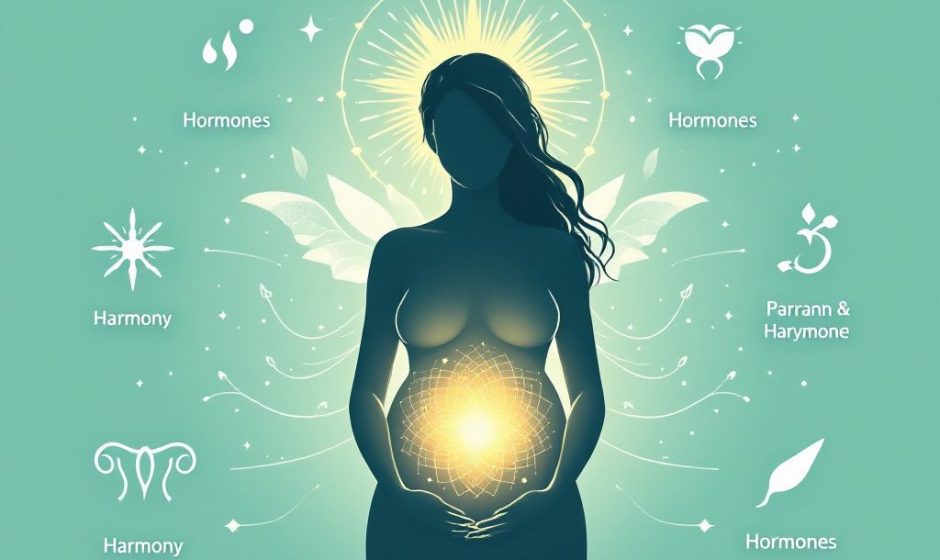So, you’re pregnant or someone close to you is, and suddenly the world feels different, right? It’s like stepping into a whole new realm where emotions, cravings, and bodily changes are your new normal. You might have heard about these magical things called hormones which play a starring role in this transformation. If you’re confused or curious about the hormones released during pregnancy and what they’re really doing in there, buckle up, because we’re here to take you on this wild ride!
The Magic Cocktail of Pregnancy Hormones Begins
It’s no surprise—pregnancy kicks off with a bang-in-the-form of an intricate chemical dance right from the beginning. The saga starts the moment an egg gets fertilized. That’s when your body starts cooking up a concoction of hormones.
Human Chorionic Gonadotropin (hCG)
The first player to hit the stage is **hCG**, and it’s the reason your at-home pregnancy test glows positive. The real headline here? hCG is all about sustaining that early pregnancy. It nudges your ovaries to stop the menstrual cycle—explaining why Aunt Flo skips the party—and amps up progesterone and estrogen.
Is it responsible for morning sickness? Well, there’s a cocktail party in there, and hCG’s the bartender. While not the only culprit, it’s definitely one of the mixes behind your queasy stomach.
Progesterone: The Bodyguard Hormone
Progesterone steps up early and stays throughout the pregnancy—not just to make you sleepy but to play bodyguard. It helps prevent uterine contractions that could jostle the delicate package by relaxing the muscles and promoting uterine calmness. You can thank progesterone for your exhaustion in the first trimester, the way it prompts blood vessels to supply nutrients, and well, helps you bond with some of those extra pounds.

Diving Deeper Into Other Important Hormones Released During Pregnancy
Estrogen: The Multitasker
**Estrogen** does almost everything except brew your morning coffee. What doesn’t this hormone do? Higher levels of it boost blood flow, and it stimulates the development of the baby’s organs. It has a hand in breast changes like enlarged areolas and the occasional why-did-my-bra-get-so-tight moment.
However, estrogen also turns emotional volume dials way up, making wartime-like strategizing out of grocery shopping. So if you find yourself tearing up at a cute puppy video? Give a nod to the multitasker, Estrogen.
Relaxin: The Flexibility Guru
Ever wonder why some pregnant folks suddenly feel superhero flexible? Say hello to **relaxin**, a hormone primarily focused on—you guessed it—relaxation. It loosens ligaments, particularly around the pelvis, allowing your body to accommodate birth. However, beware, it also means your joints are temporarily looser, making occasional clumsiness expected.
Prolactin: The Nurturer
Welcome **prolactin** to the stage—the toolkit for feeding your soon-to-be little one. Primarily, prolactin is all about milk production. It’s preparing you to nourish your baby post-birth by signaling your mammary glands. It’s a patient dame, waiting until after you deliver to unleash its full potential when it joins forces with the little bundle of joy ready for nourishment.
Hormonal Waves: Understanding Changes in Your Body

When it comes to pregnancy, we’ve talked about the celebrity hormones. Let’s not forget the rock band behind them—**oxytocin**, **placental growth hormone**, and others, each with unique gigs.
Oxytocin: Love & Labor’s Best Friend
Known also as the love drug, **oxytocin** has a big role when it’s SHOWTIME! It heightens emotions, strengthens the contractions for birthing, and after the big launch, ties kinship with the baby, enhancing bonding and breastfeeding.
A Look at the Fetal Impact
Time for a twist—the hormonal scenery isn’t just for mom! Fetal adrenals start producing **DHEA**, ensuring neither estrogen levels nor the task list slack. This mama-baby hormone swap fest continues till they become head honchos of delivery day.
Hormones Released During Pregnancy: Facing the Changes
So what about all those changes and mood shifts while you’re waiting around for labor day? Yep, it’s back to those hormones. Many pregnancies serve up a rollercoaster—a plethora of highs and lows because, frankly, it’s not just a blossom-burst of motherly instincts but a symphony of occasionally reckless feelings.
Adjusting to Hormonal Highs
Sometimes, embracing these highs and lows involves just riding the wave. Essentially, a good footing involves snacking smartly, resting adequately, and engaging in mild exercises, like gentle yoga or a brisk walk. Also, some nurturing self-care like soothing baths or stretching can create a grounding effect. Pro tip: a few simple meditation techniques can chase off stressors and lasso you right back into calm.

Stretching Our Heads Around Hormonal Myths
Now, it wouldn’t be fair to talk about hormones released during pregnancy without addressing a few myths and scattered advice internet forums throw your way. Just know the infamous “pregnancy glow” isn’t always as magical as some tout—it can sometimes come hand-in-hand with acne or other skin shifts, articulated by (ding, ding) these hormones we’ve celebrated. But, they’re simply part of welcoming a new one to the world, without all the confounding factors that science doesn’t always unpack neatly into boxes.
The Role of Thyroid Gland
It bears mentioning, the thyroid deserves a noticeable citation here. Pregnancy affects thyroid hormone production, whether you’ve been diagnosed previously with a thyroid condition or if it’s snuck in under the radar. That balance loop can flip your day-to-day grind slightly awry, changing your body regulatory functions, like energy levels, by bumping them either hypo- or hyper-.
These colorful tales blend beautifully into maternal chapters, gleaming right where mind meets physiology, leaving a sometimes unnerving but undeniably enchanting saga behind.
Wrapping Up the Hormonal Harmonium
Navigating the world of hormones released during pregnancy can feel like scripting a movie where chemistry decides the punchlines—but here’s the thing, every pregnancy is wonderfully unique in its hormonal and experiential unfolding.
Whether it’s answering why your nightstand candy bars emptied almost overnight, the scenario still subtly traces back to an intricate hormonal backstory. Here we ventured, traced the key hormones managing this whirlwind.
In closing? Trust the process. The old standby of ‘keeping an open mind’ truly becomes your parenting adventure hallmark. Remember, no two journeys carry identical updates, yet through it all, these hormonal blues and their reliable rhythm hold steadfast—a reminder life continuously adapts marvelously in its myriad forms.
Frequently Asked Questions
What are the benefits of using a hair mask in my hair care routine?
Using a hair mask can provide several benefits, including hydration, smoothing, strengthening, curl definition, heat protection, and damage repair. Hair masks infuse the hair with moisture, help coat the hair shaft to seal split ends, reduce breakage, and protect the hair from heat styling and environmental damage[1][4].
What ingredients should I look for in a hair mask?
Effective hair masks often include ingredients such as coconut oil, argan oil, shea butter, honey, avocado oil, green tea, and coconut water. These ingredients provide nourishment, moisturize, and protect the hair, offering benefits like softening, moisturizing, and protecting against damage[2][5].
How often should I use a hair mask in my routine?
You should use a hair mask whenever your hair feels dry, unmanageable, or in need of intense hydration. This can vary depending on your hair type and needs, but generally, using a hair mask once or twice a week can help maintain healthy and moisturized hair[1][4].
How do I apply a hair mask for the best results?
To apply a hair mask effectively, shampoo your hair first, then apply the mask, focusing especially on the ends where hair tends to be the most damaged. Leave the mask on for anywhere from 10 minutes to overnight, depending on the type of mask and your hair’s needs[1][4].
References



